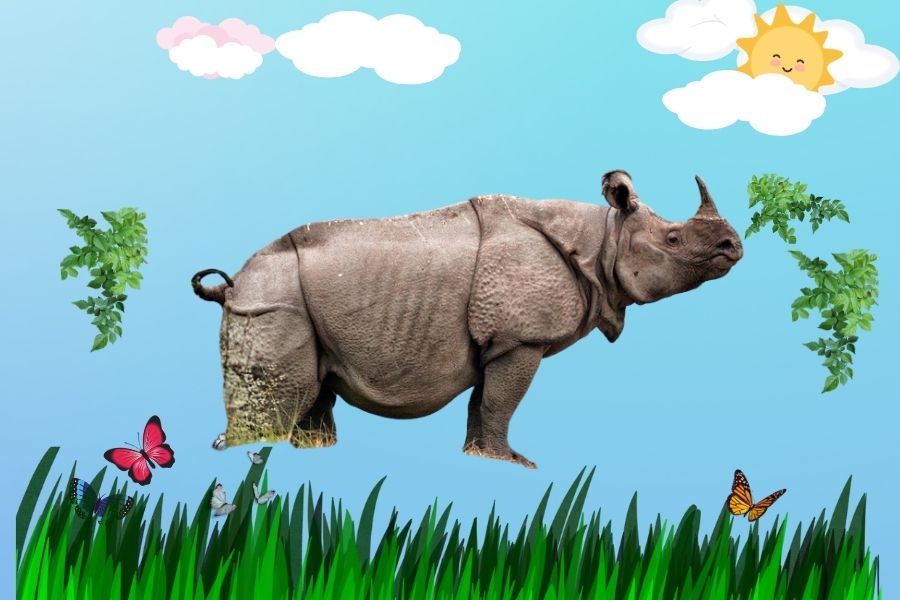India is known for its diverse flora and fauna. Many extinct animals live in India. Some went extinct almost 200-300 years ago, and some went extinct recently.
This article talks about recently extinct animals in India that you can’t see anymore.
The continuous habitat loss, deforestation, and climate change have contributed significantly to their extinction.
The Impact of Extinction on India’s Ecosystem
According to Dr. Rajesh Gopal, Secretary General of the Global Tiger Forum,
Every extinction creates a ripple effect throughout the ecosystem, disrupting food chains and altering the balance of nature (source).
The reason behind extinction:
- Disruption of food chains
- Alterations in plant populations
- Changes in predator-prey dynamics
- Loss of genetic diversity
Now, let’s explore the five recently extinct animals in India.
1. Asiatic Cheetah:

The Asiatic Cheetah is a subspecies of the Cheetah. It is a critically endangered species worldwide. However, in 1947-1948, it became extinct in India. It was officially declared extinct in 1952.
Key Characteristics:
- Scientific Name: Acinonyx jubatus venaticus
- Weight: 34-54 kg (75-119 lbs)
- Length: 112-135 cm (44-53 in), excluding tail
- Distinctive Features: Slim body, deep chest, long legs, tear stripes on face
Habitat and Diet:
In January 2022, 9 male and three female Asiatic Cheetahs left in Iran. The Asiatic Cheetahs were primarily inhabited in the Kerman, Khorasan, Yazd, Tehran, and Markazi desert areas. Kavir National Park, Touran National Park, and Naybandan Wildlife Reserve were also found.
Cause of Extinction:
The primary reasons for the Asiatic Cheetah’s extinction in India were:
- Habitat loss due to human encroachment
- Hunting for sport and fur
- Decline in prey populations
Current Status:
While extinct in India, a small population of Asiatic Cheetahs (fewer than 50 individuals) still survives in Iran. Conservation efforts are ongoing to protect this critically endangered subspecies.
2. Pink-headed Duck:

The pink-headed Duck is a unique species of Duck that was found in India and Bangladesh. It was last seen in the 1940s and declared extinct in the 1970s.
Key Characteristics:
- Scientific Name: Rhodonessa caryophyllacea
- Size: Similar to common Spot-billed Duck
- Distinctive Features: Bright pink head, neck, and bill contrasting with a dark body
Habitat and Diet:
These ducks love to live in lowland marshes, swamps, and lakes with tall grass jungles. Their primary food includes aquatic plants, mollusks, and small fish.
Cause of Extinction:
- Extensive hunting for its unique pink feathers
- Habitat destruction due to agricultural expansion
- Egg collection by enthusiasts
Current Status:
While officially considered extinct, there have been unconfirmed sightings in remote areas of Myanmar, offering a glimmer of hope for rediscovery.
3. Indian Aurochs:

The Indian Aurochs are an extinct subspecies of domestic cattle. They were primarily found in the Indian subcontinent and other parts of the world, such as Africa and South America.
According to the IUCN, the Indian aurochs became extinct before the 13th century AD. The most recent skeleton was found in Uttar Pradesh in 1800 BC.
Key Characteristics:
- Scientific Name: Bos primigenius namadicus
- Weight: Up to 1000 kg (2200 lbs) for males
- Height: 1.55-1.80 meters (5-6 ft) at the shoulder
- Distinctive Features: Large, forward-curving horns
Habitat and Diet:
Indian Aurochs love to live in grasslands, forests, and open woodlands. They are herbivores, so they eat grasses and leaves.
Cause of Extinction:
- Overhunting by humans
- Habitat loss due to agricultural expansion
- Competition with domestic cattle
Legacy:
The Indian Aurochs are considered an ancestor of many modern Indian cattle breeds.
4. The Northern Sumatran Rhinoceros:

This species of rhinoceros was found in eastern India, the Eastern Himalayas of Bhutan, Bangladesh, and Mongolia. The Northern Sumatran Rhinoceros was declared extinct in India in the 1920s.
According to IUCN, it was considered “Critically Endangered” in 2008. However, the report is concerned that this species of rhinoceros might still exist in the wild (Burma, Malaysian Peninsula).
Key Characteristics:
- Scientific Name: Dicerorhinus sumatrensis lasiotis
- Weight: 500-800 kg (1,100-1,760 lbs)
- Height: Up to 1.5 meters (5 ft) at the shoulder
- Distinctive Features: Hairy body, single small horn
Habitat and Diet:
These rhinos love to live in rainforests, swamps, and lowland areas. They were feeding on leaves, twigs, and fruits.
Cause of Extinction:
- Habitat destruction due to deforestation
- Poaching for their horns, used in traditional medicine
- Low reproductive rate, making population recovery difficult
Current Status:
While extinct in India, there is a little possibility that a few individuals might still exist in Myanmar or Malaysia, though this is unconfirmed.
5. Sunderban Dwarf Rhinoceros:

The Javan Rhinoceros other name is Javan rhino, Sunda rhinoceros and Lesser one-horned rhinoceros. This is the rare member of the Rhinoceros family (Rhinocerotidae) out of five members.
Key Characteristics:
- Scientific Name: Rhinoceros sondaicus
- Weight: 900-2,300 kg (2,000-5,100 lb)
- Height: 1.4-1.7 m (4.6–5.8 ft)
- Distinctive Features: Single horn, heavily folded skin
Habitat and Diet:
Javan Rhinos live in lowland rainforests, wetlands, and grasslands. They feed on leaves, twigs, and fallen fruit.
Cause of Extinction in India:
- Extensive hunting during the colonial era
- Habitat loss due to agricultural expansion
- Low genetic diversity, making the population vulnerable
Current Status:
While extinct in India, a small population of about 74 individuals survives in Ujung Kulon National Park, Indonesia. The Javan rhinoceros were found in Assam, Bengal, Myanmar, Thailand, Cambodia, Laos, Vietnam, and many others.
FAQs:
-
Which animal has recently become extinct in India?
Indian Cheetah or Asiatic Cheetah has recently become extinct in India.
-
What are the five extinct animals in India?
We discover that there are only five animals that have become extinct in recent times. Those extinct animals are-
Asiatic Cheetah
Pink-headed Duck
Indian Aurochs
The Northern Sumatran Rhinoceros
Sunderban Dwarf Rhinoceros -
How many extinct animals are there in India?
According to wildlife survey organizations, there are 22 extinct animals in India. Of these, 18 are flora, and four are fauna.
-
What is the #1 most endangered animal in India?
The Bengal Tiger is the no one most endangered animal in India right now.
Conclusion:
In conclusion, these five animals were once vital to India’s rich biodiversity. Their extinction reminds us of the importance of conservation and the need to protect endangered species. We can’t do anything for these recently extinct animals in India, but we can do something for our rare endangered species.

